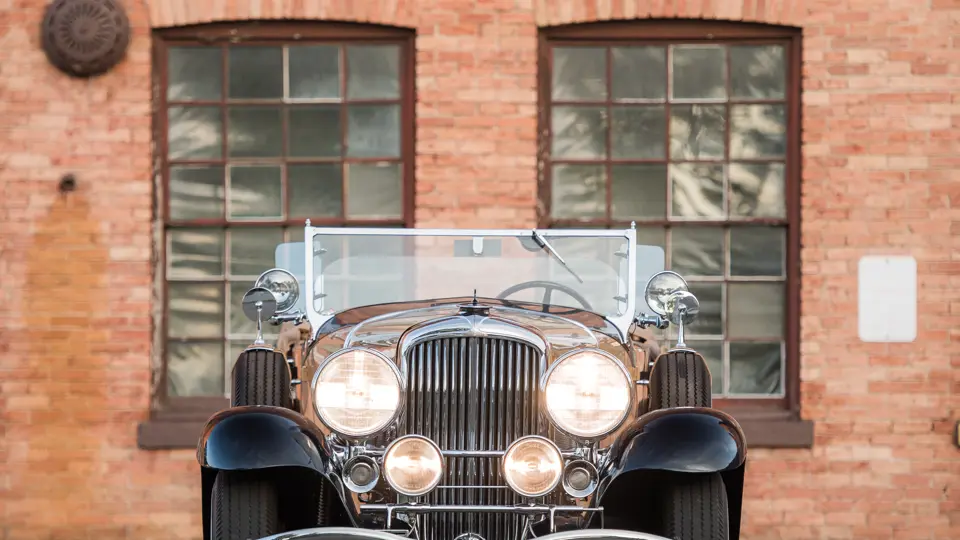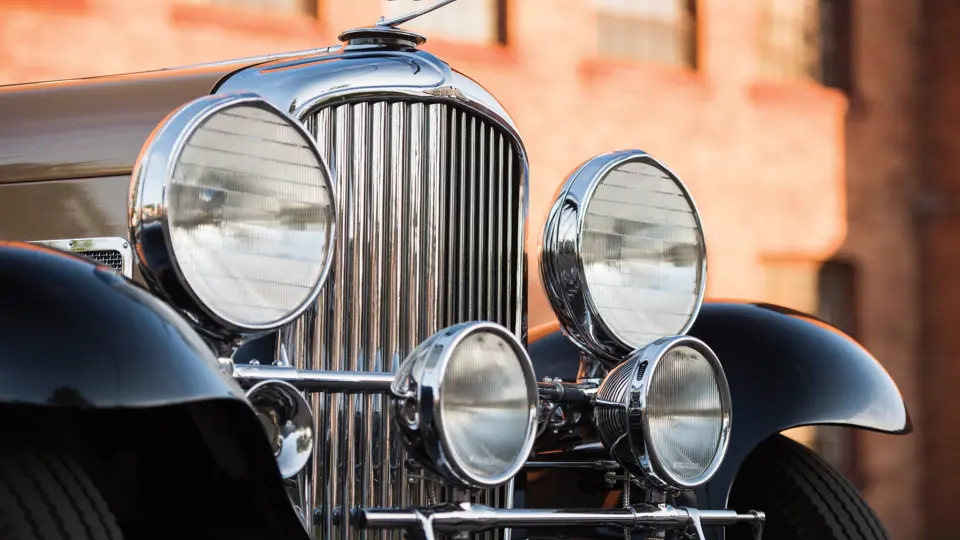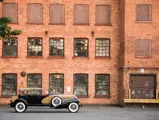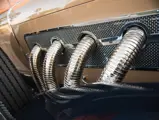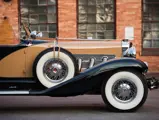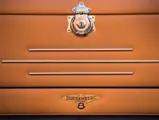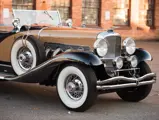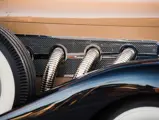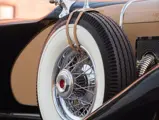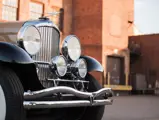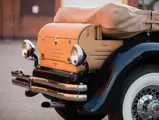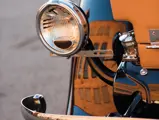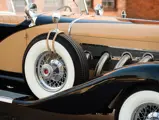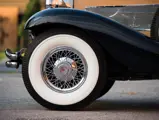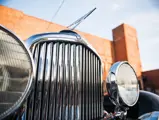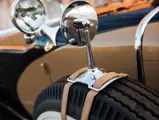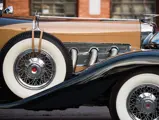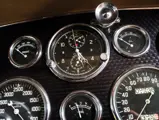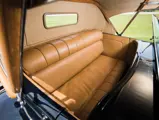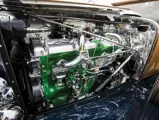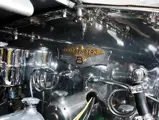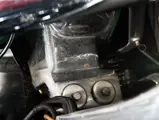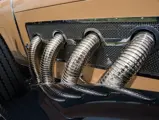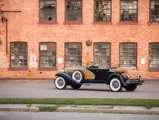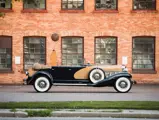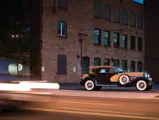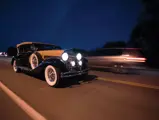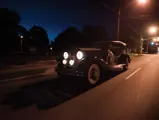
1935 Duesenberg Model SJ 'Sweep Panel' Dual-Cowl Phaeton in the style of LaGrande
{{lr.item.text}}
$852,500 USD | Sold
{{bidding.lot.reserveStatusFormatted}}
- The company car of Duesenberg President Lucius B. Manning
- Original engine and chassis, with a recreation of this car’s original body
- Recently rebuilt, upgraded SJ-specification engine
- Recent concours d’elegance Best of Show winner
320 bhp, 420 cu. in. DOHC inline eight-cylinder engine with Schwitzer-Cummins centrifugal supercharger, three-speed manual transmission, beam-type front and live rear axles with semi-elliptical leaf springs, and vacuum-assisted four-wheel hydraulic drum brakes. Wheelbase: 153.5 in.
The Duesenberg Model J, affectionately nicknamed the “Duesy,” continues to represent anything truly great or grand today, regardless of the chosen spelling. It was bankrolled by E.L. Cord and designed from the outset to be the world’s finest car. When the Model J debuted at the New York Auto Salon on December 1, 1928, its launch dominated newspaper headlines.
The Model J’s visually impressive, 420-cubic inch, dual overhead cam, inline eight-cylinder engine featured a free-breathing, four-valve cylinder head, and it could develop 265 brake horsepower in normally aspirated form. Other remarkable features found on the Model J included a fully automatic chassis-lubricating system that operated every 30 to 60 miles, excellent two-shoe hydraulic drum brakes, and complete instrumentation, which included a 150-mph speedometer, a tachometer, an altimeter, an eight-day clock with a split-second stopwatch hand, and more. In short, from its introduction to the present, the Model J marks the crowning achievement of the Classic Era.
THE PRESIDENT’S COMPANY CAR
From the 1910s until the 1930s, it was not uncommon for a wealthy owner to have a favorite coachbuilt body that would be reconditioned and moved to a new chassis every few years rather than buy an entirely new automobile at tremendous cost.
Duesenberg Motors President Lucius B. Manning was no exception and had at his disposal a “sweep panel” dual-cowl phaeton designed by Gordon Buehrig and built under the LaGrande label by Union City Body Company. Buehrig’s lines were a notable sporty improvement upon the earlier LeBaron version of this design, especially when built upon a long-wheelbase chassis, as Mr. Manning’s body was.
Mr. Manning used this body on no fewer than four different Model J Duesenberg chassis, of which this car, chassis number 2592 with engine number J-562, was one. The car was driven by Mr. Manning in Chicago, Cord Corporation’s base of operations, for about a year, demonstrating the power of the Duesenberg. When an order for a “new” Duesenberg chassis came through, the president allowed the chassis of his car to be taken for the sale (as he had before, and would again, a third time), and it was re-bodied as a Willoughby Berline for delivery to a lucky owner.
The Willoughby body was removed years later, and the chassis was sold by A.T. O’Neill to the well-known collector Hubert Fischer, of Minnesota. Mr. Fischer was a passionate Duesenberg enthusiast who owned several Model Js during a long period of activity in the hobby. He had Mr. Manning’s original LaGrande Dual-Cowl Phaeton body recreated by respected craftsman Harold Orchard, of California, whose work was extremely highly regarded. It is important to note that the curvaceous skirted fenders, which are of the type added to many later Duesenbergs, are correct, as Mr. Manning’s original LaGrande body was so-modified during his tenure.
The car remained with the Fischer family for many years, during which time it was regularly shown at various Midwestern concours d’elegance. It was eventually acquired from them by the well-known enthusiast Gerry Shaw, of Connecticut and Florida, for whom a partial cosmetic restoration was undertaken to a very high standard. The facility of well-known Duesenberg technician Brian Joseph, Classic & Exotic Service, of Troy, Michigan, undertook an engine rebuild and also installed one of their highly regarded reproduction superchargers, upgrading the engine to ultimate “SJ” specifications.
Stunning in cobalt blue and khaki, the Duesenberg features biscuit tan leather coordinated with blue carpets, all of which is in fine condition, as is the tan cloth top and correct trunk. Enthusiasts will note such eye-catching accessories as six chrome wire wheels shod in wide whitewall tires, dual tail lamps, dual spotlights, and dual Pilot Ray driving lights. So striking is the car’s appearance that, in its current ownership, the Duesenberg was presented at the Greenwich Concours d’Elegance in 2014 and was awarded Best of Show, a testament to the elegant and classic lines of its beautiful design.
With exhaustive work taken to make it just as it was when Duesenberg’s top man enjoyed it on a daily basis, this striking Duesenberg would be no less enjoyable to drive and show today. It has made very few concours or show appearances aside from its star turn at Greenwich, and it is ready to reintroduce to Auburn Cord Duesenberg Club, AACA, or CCCA circles, in which it would most certainly be warmly welcomed.





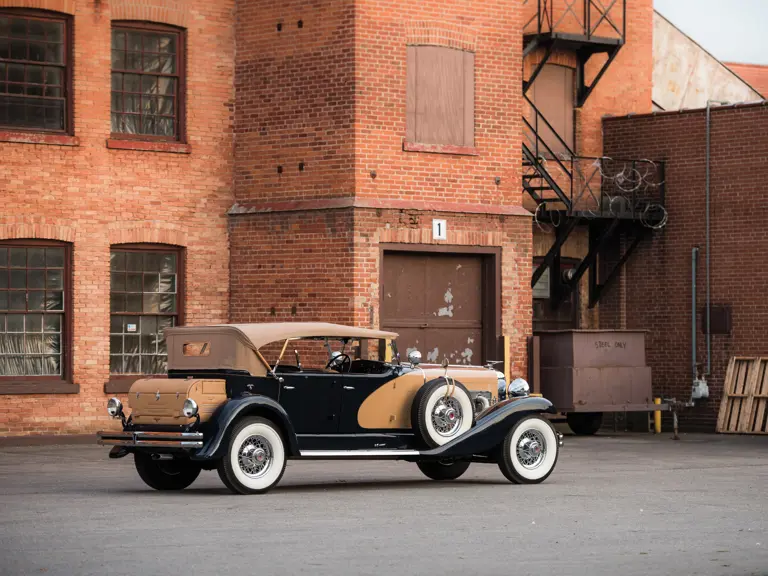
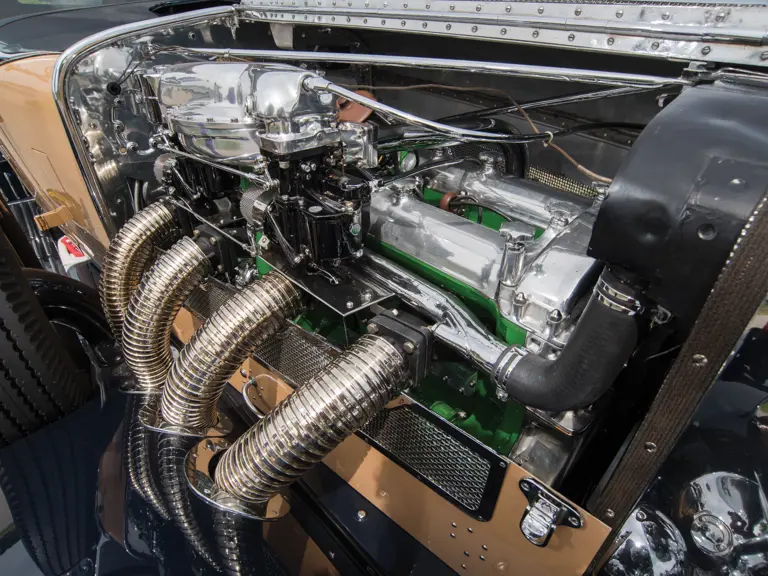
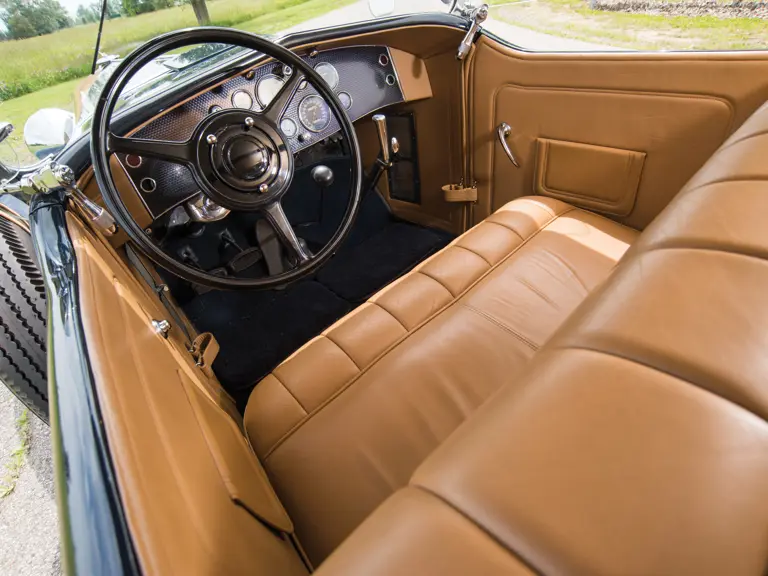

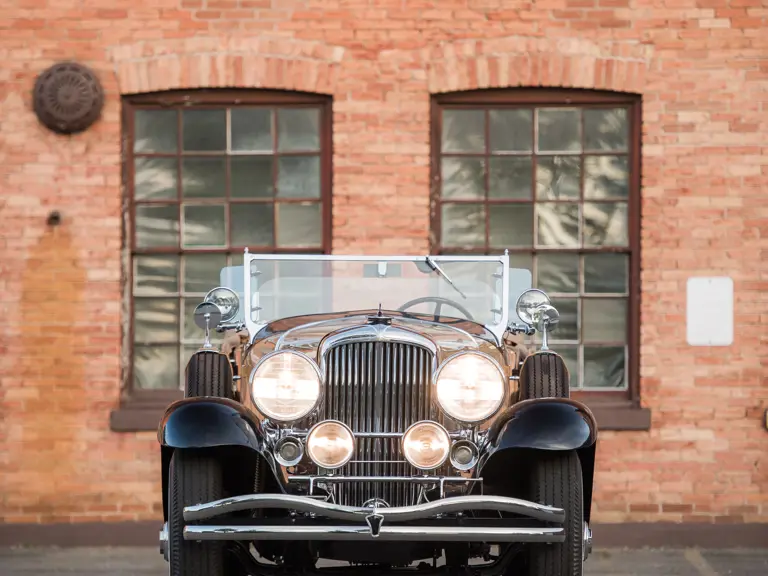

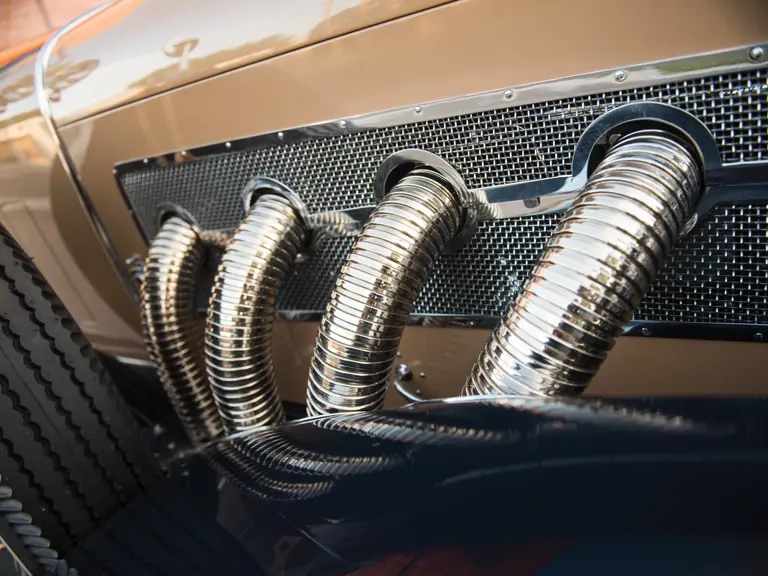
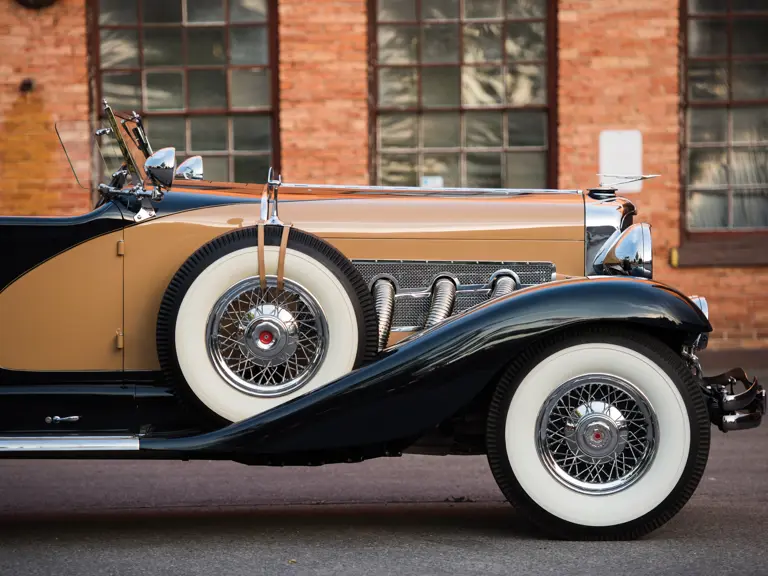
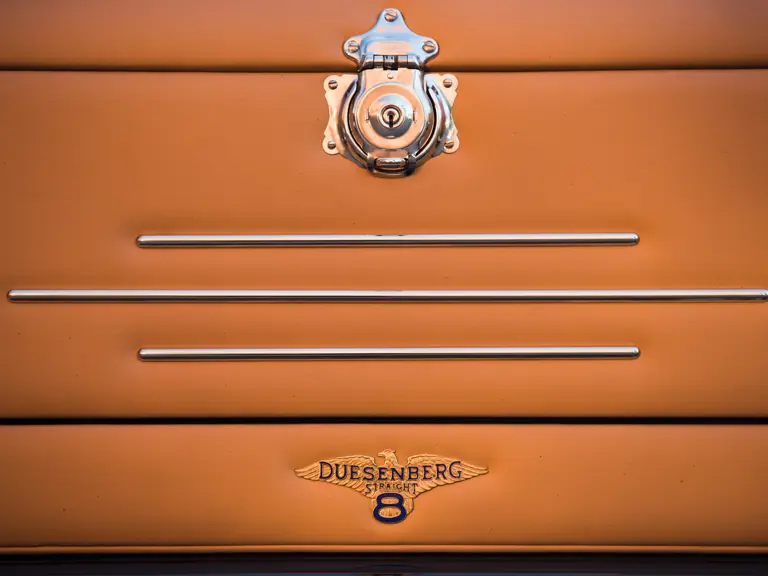
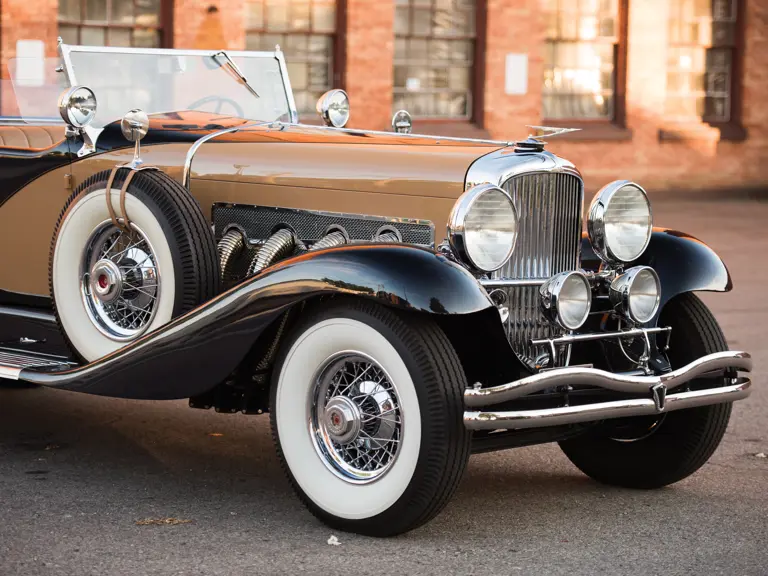

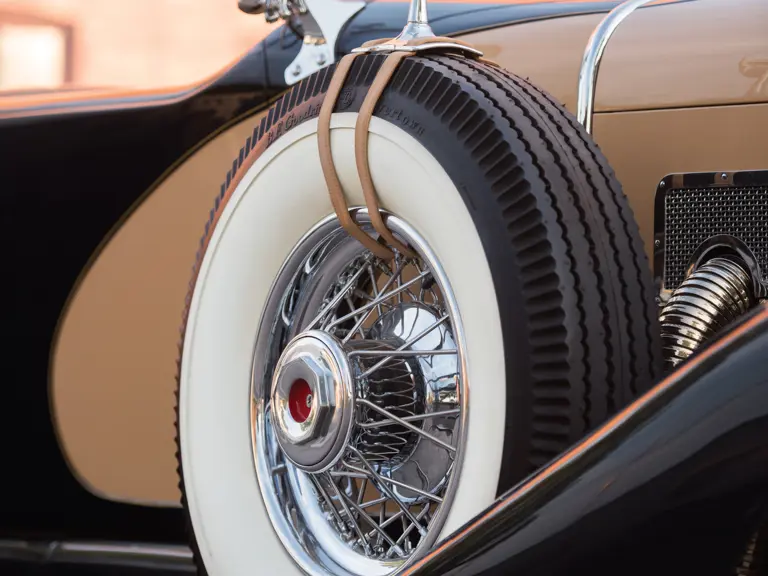

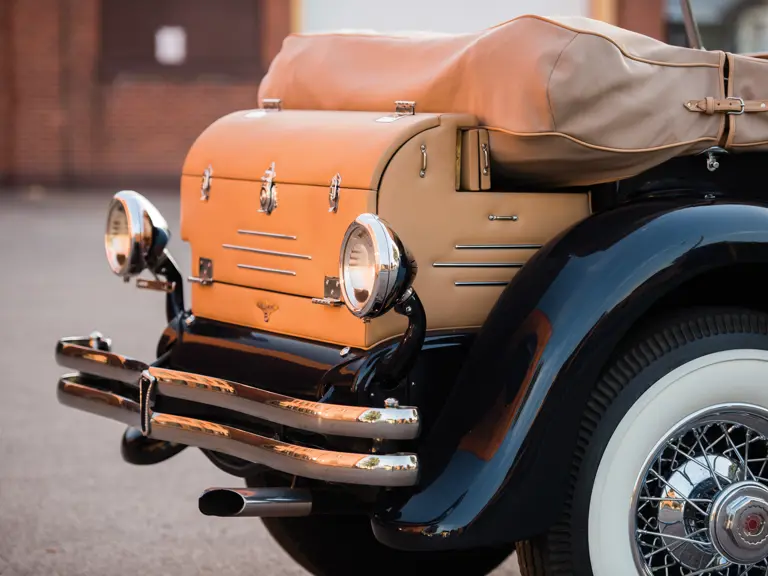
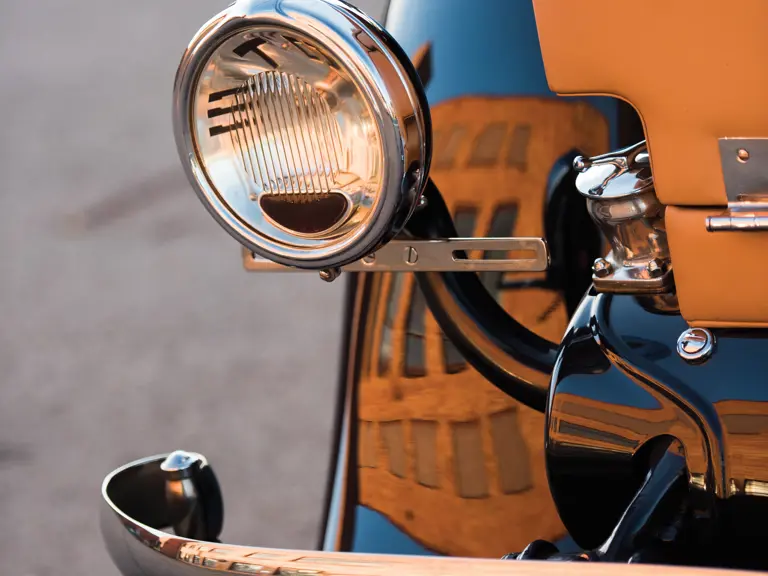
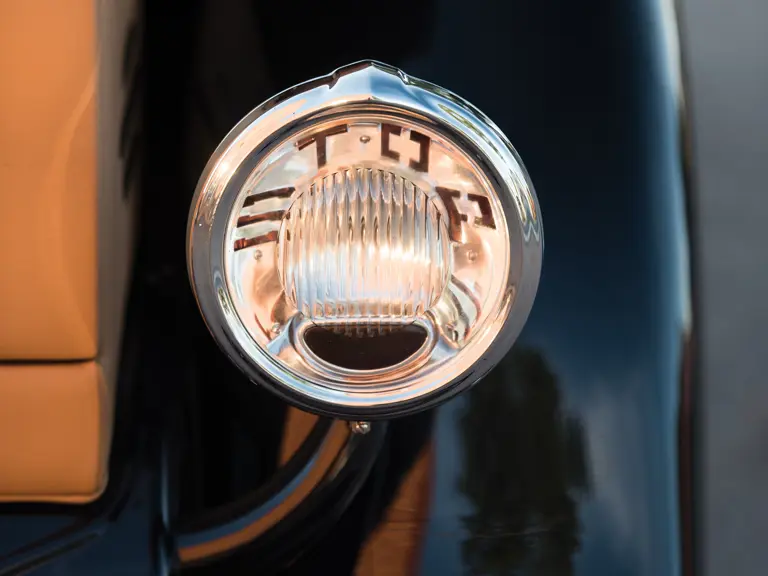
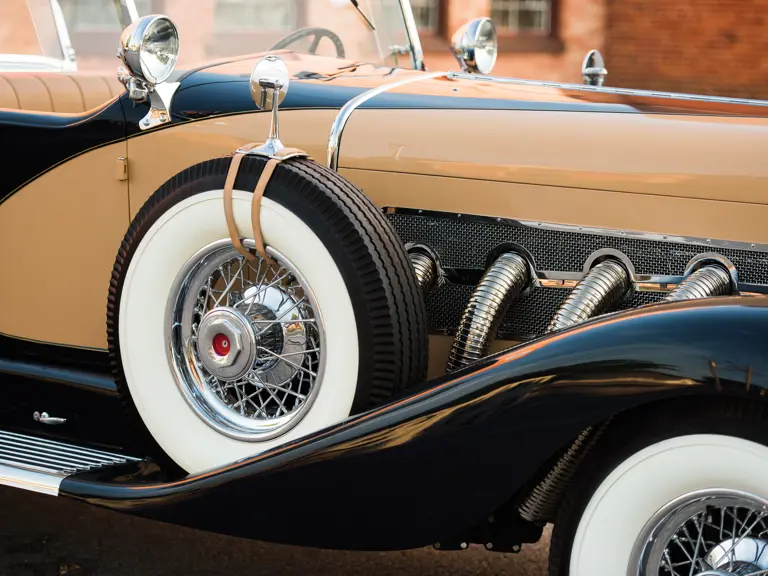
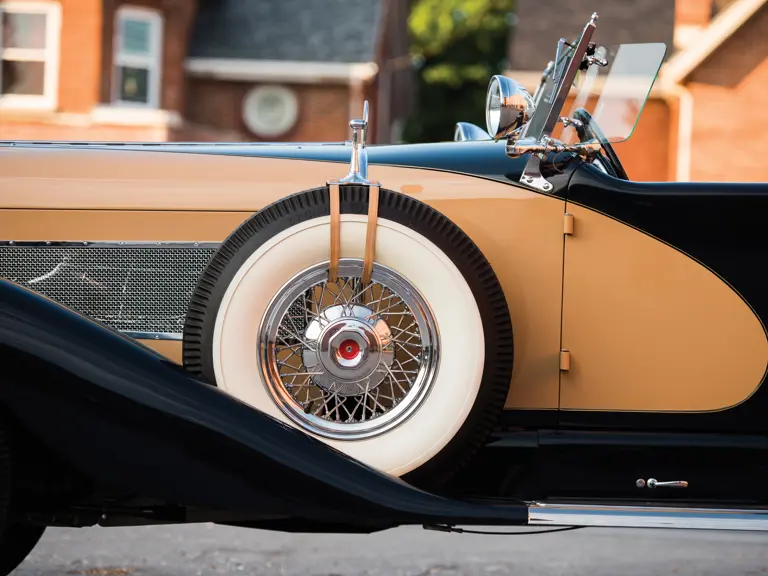
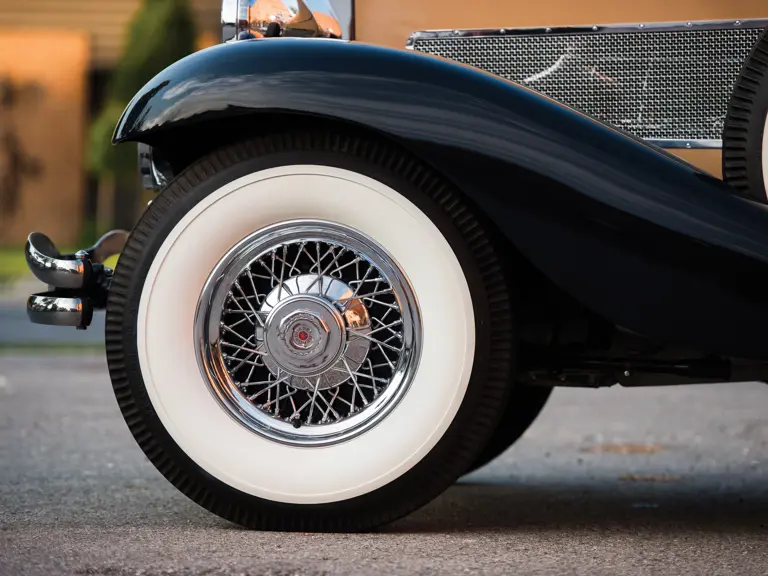
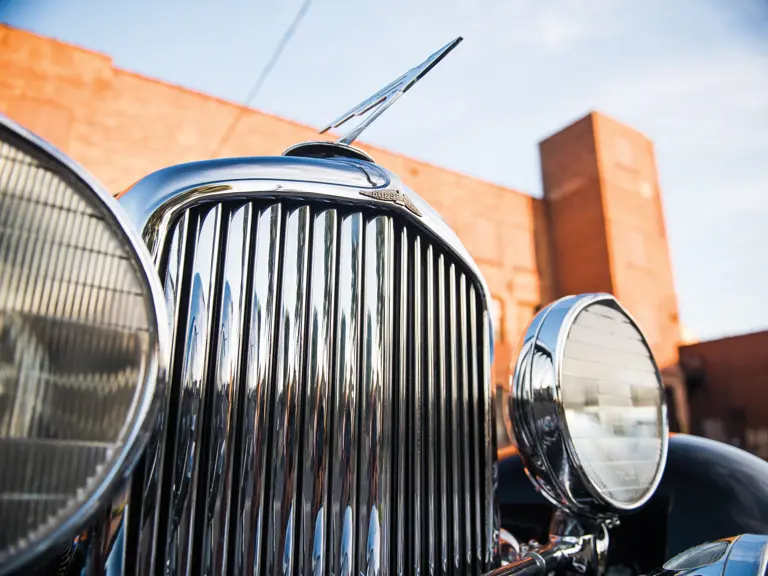
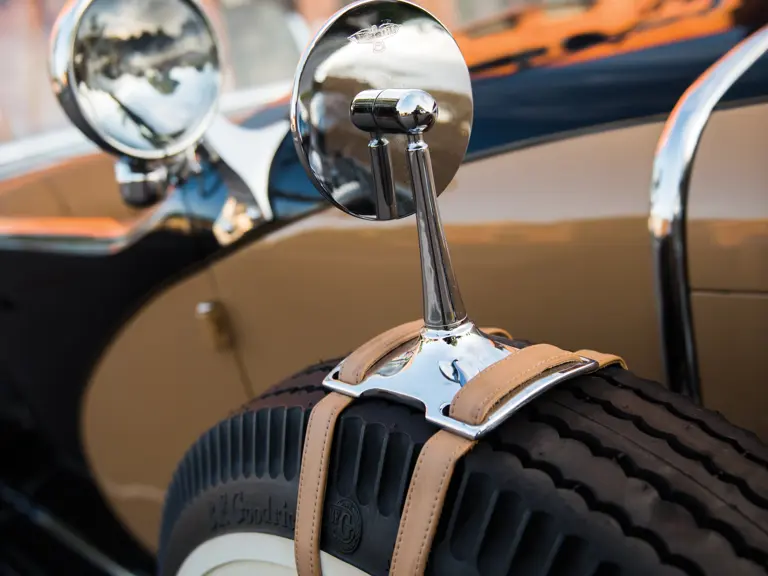
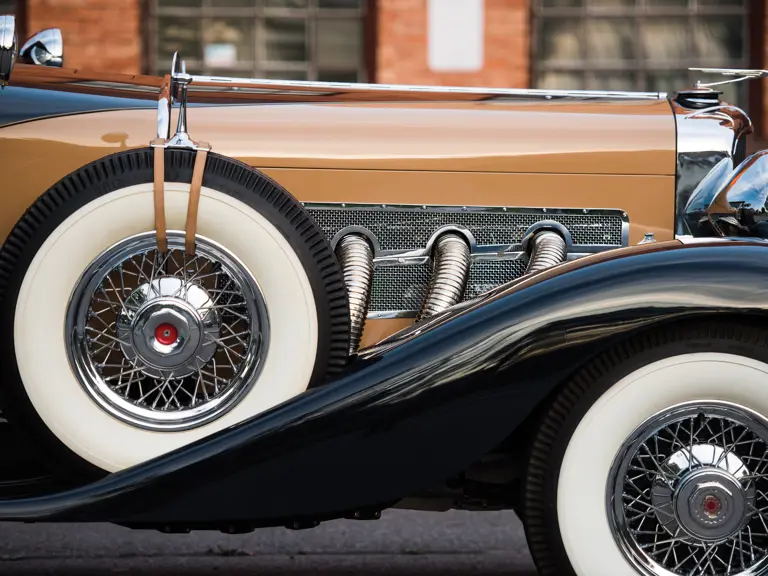
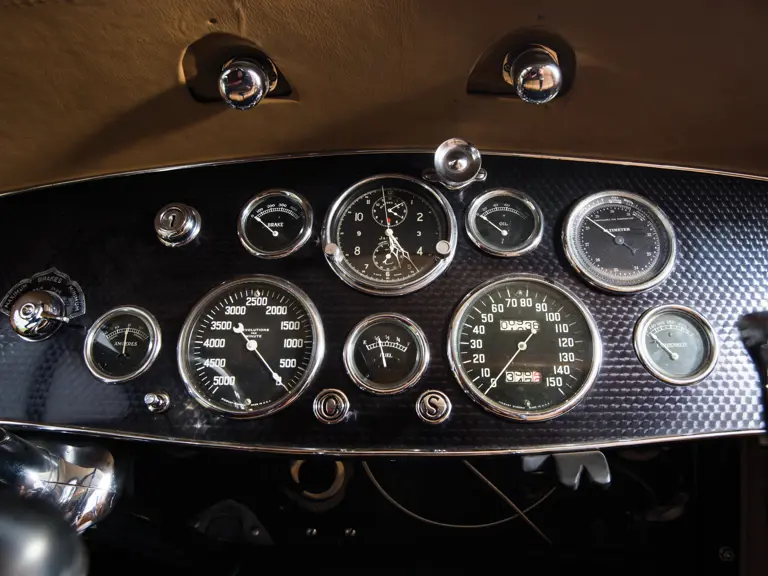

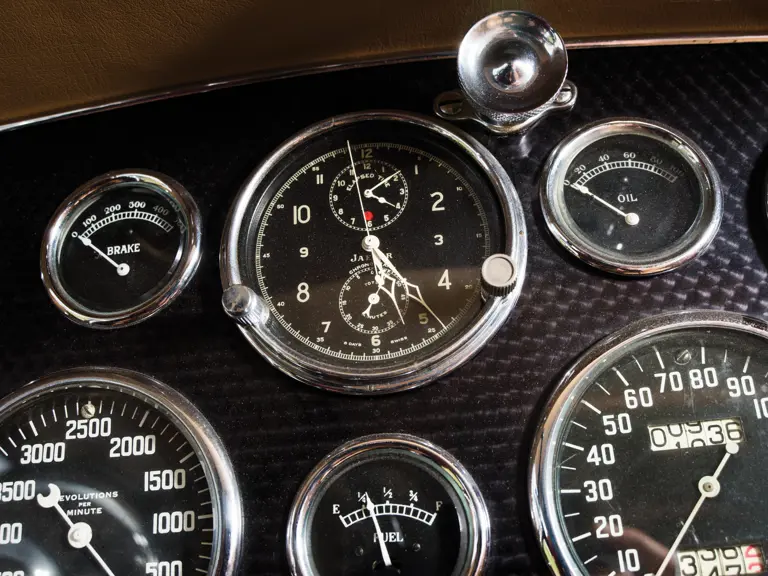
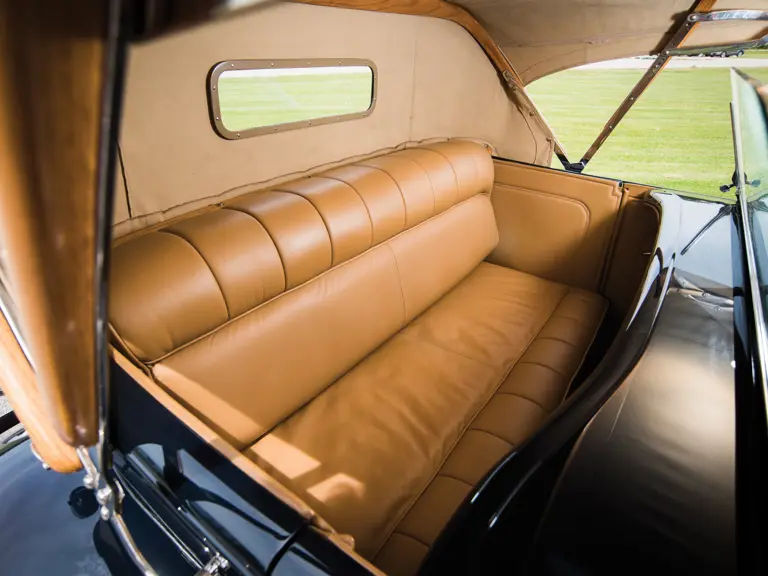
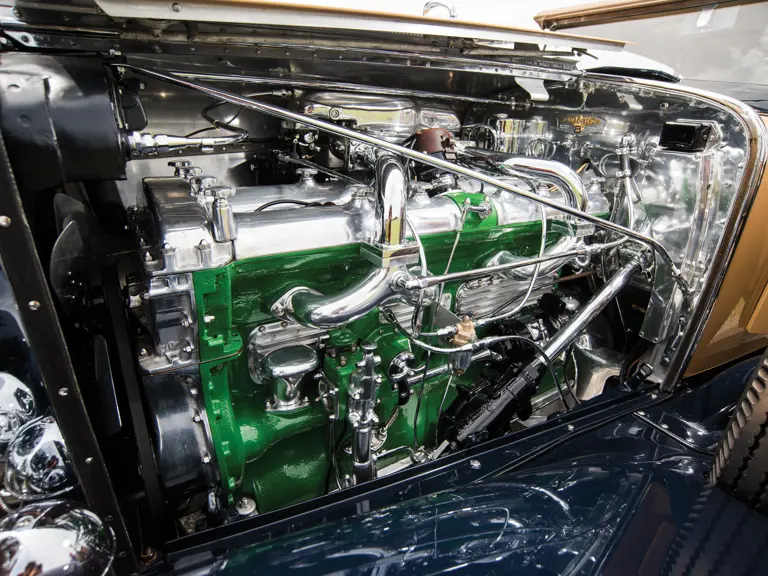
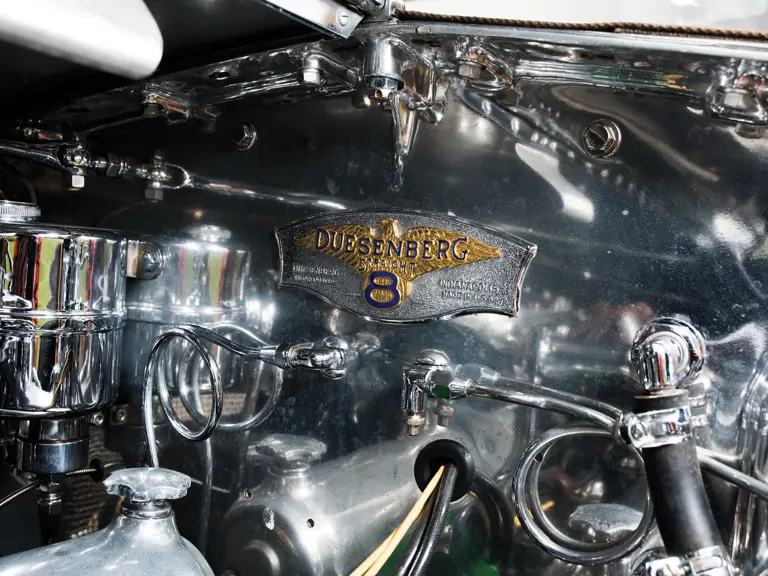
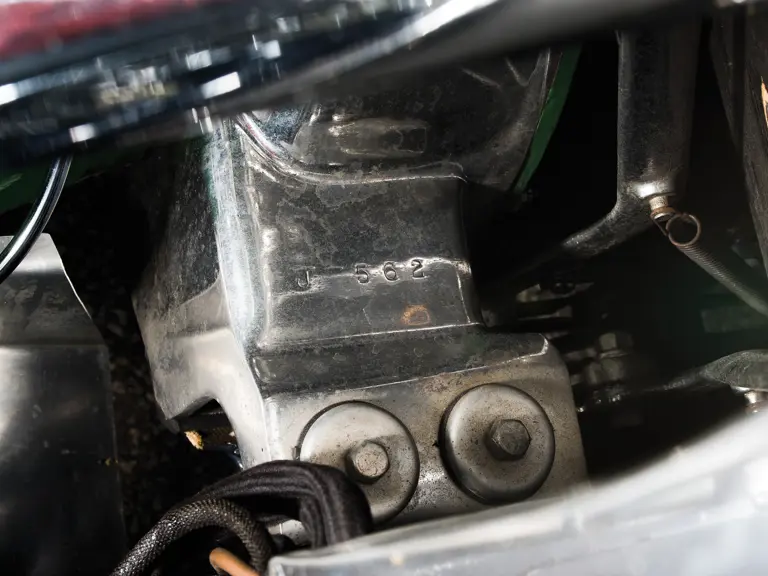

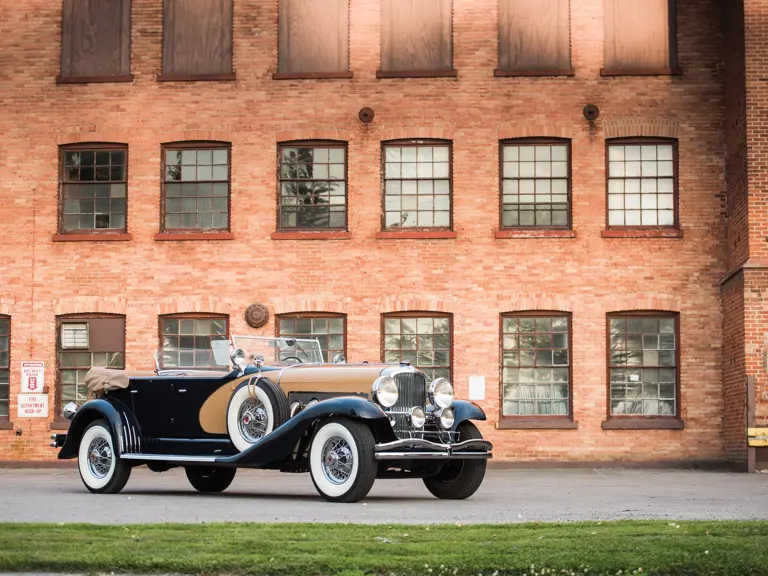
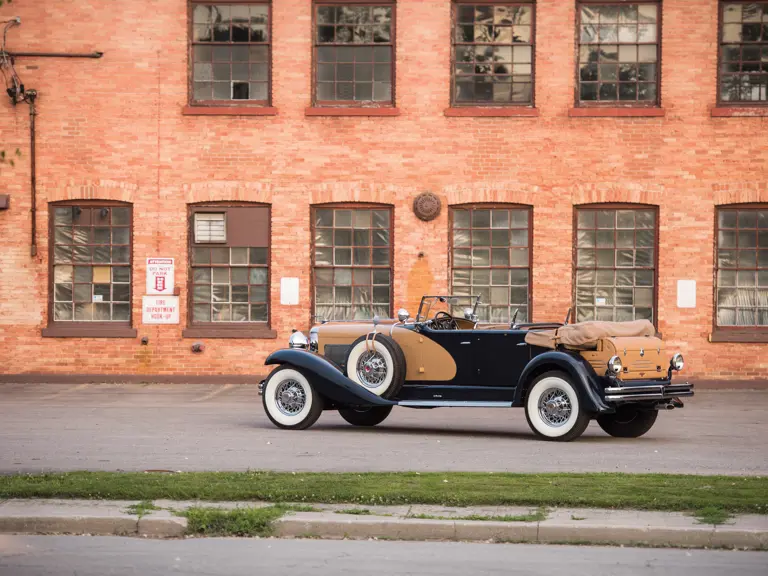
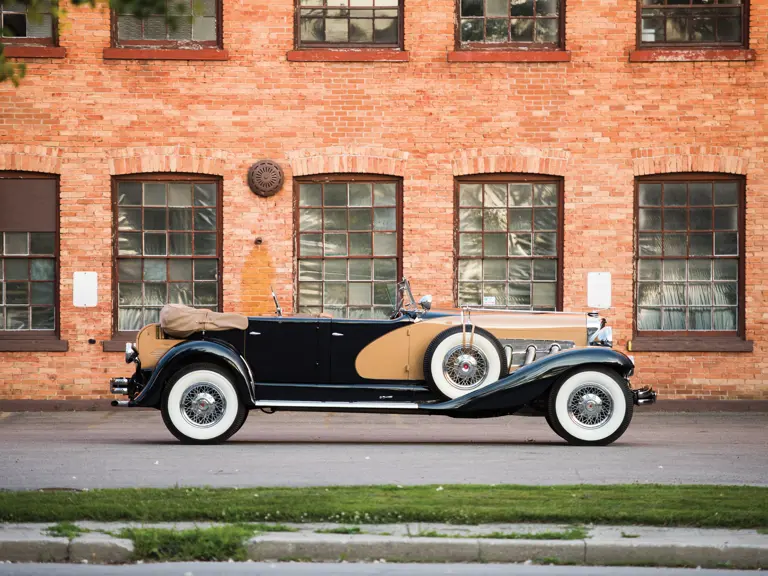

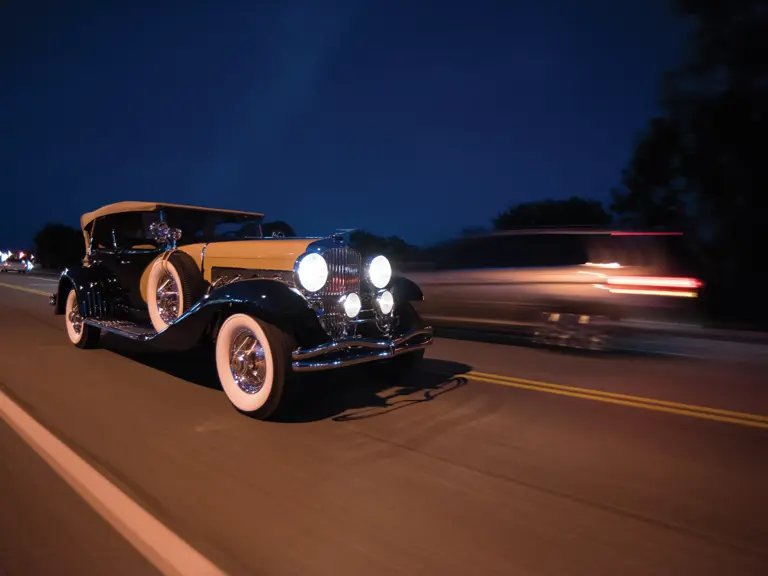
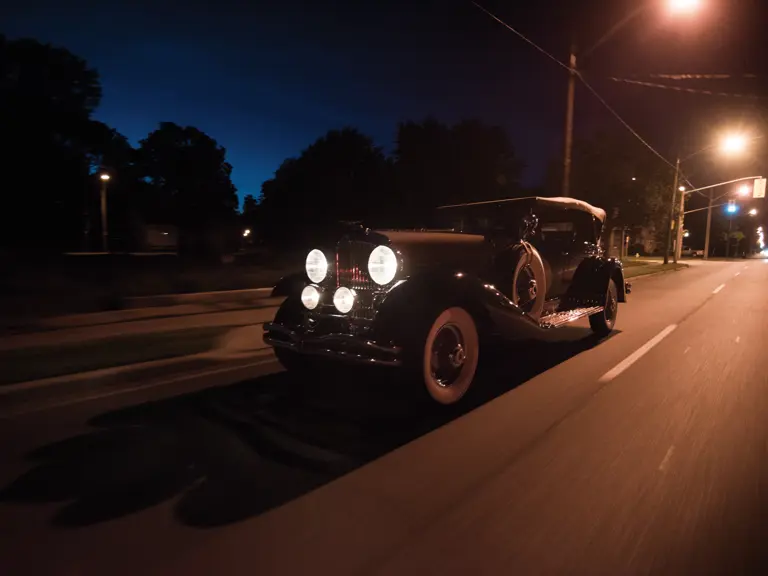
 | Plymouth, Michigan
| Plymouth, Michigan

